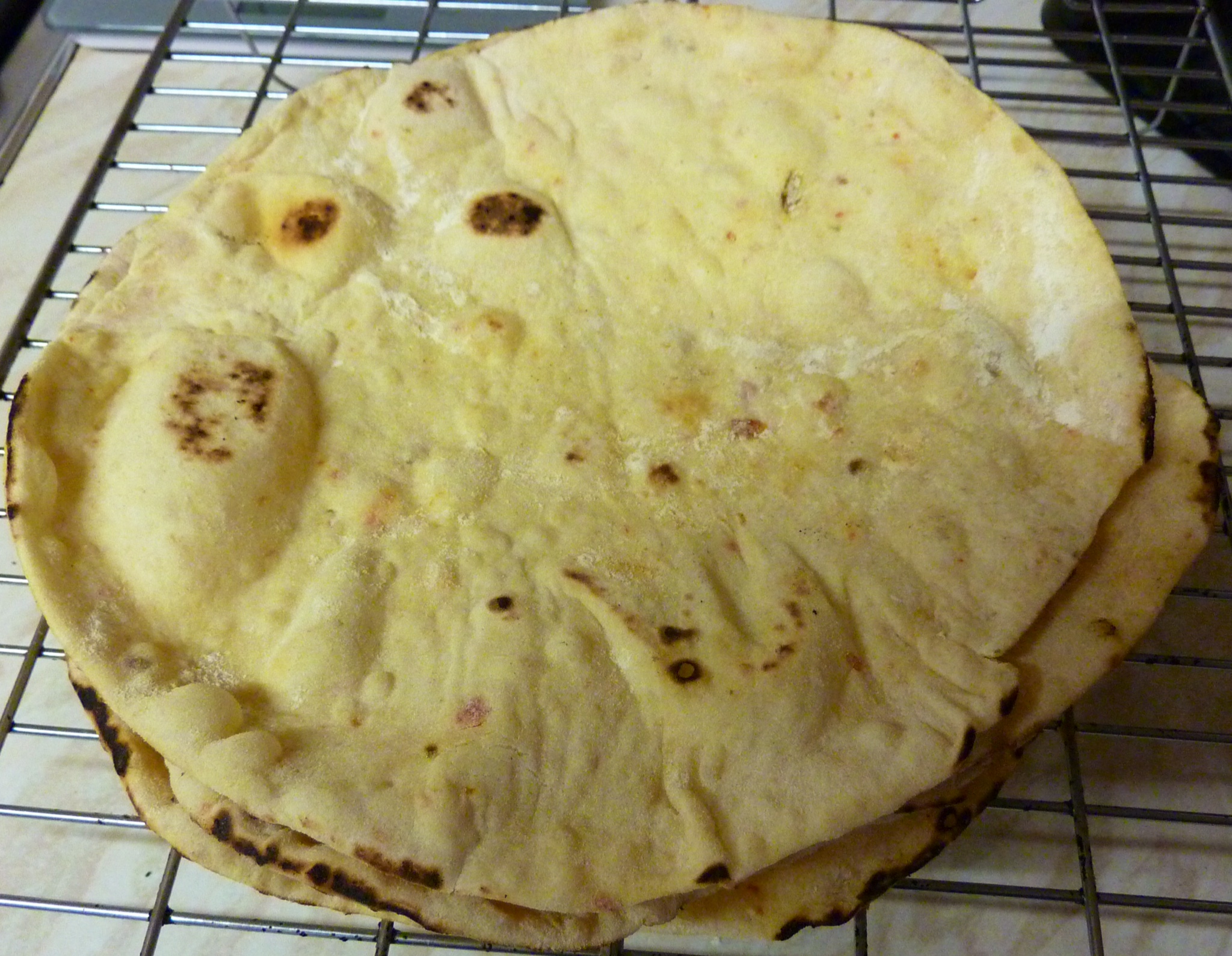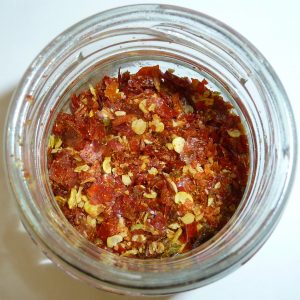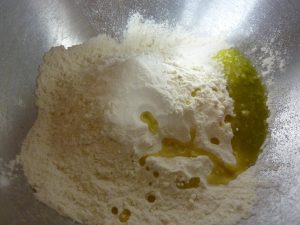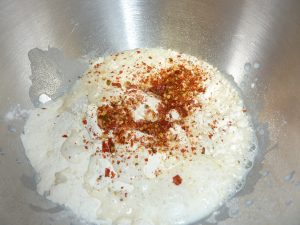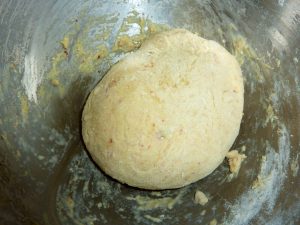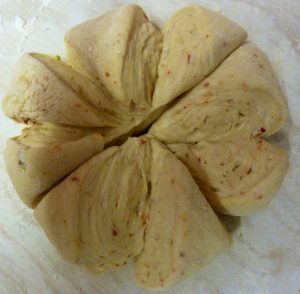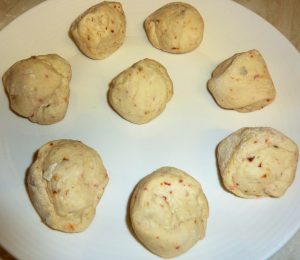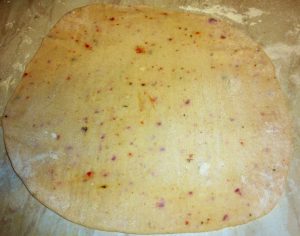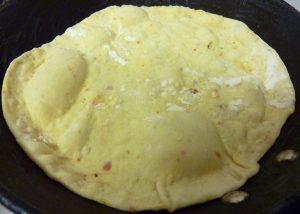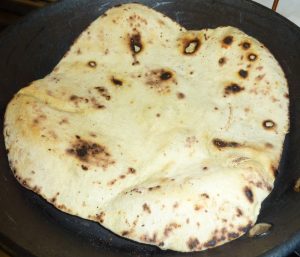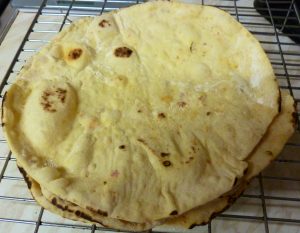By David-Louis Gouedard
I should prefix all recipes with the Mexican saying about cooking “no hay reglas fijas” – there are no fixed rules. But for this recipe in particular, not only is there more than one way to make or process this pickle, but every region has its own particular tweak, and possibly every household in that region has its own particular slightly different formulation.
The two processes are basically using oil as the preservative or using salt. The oil based one is cooked to reduce the water content of the chillies and the salt based one is not cooked. Of course both recipes have Chillies in common, and you can use any kind of DevonChilliMan’s Very Hot, Super Hot, or Nuclear chillies. The milder end of the Medium chillies just cannot stand up for themselves in this dish and so would not recommend using them. Of course the classic chilli to use is the long thin Indian chilli (you can use a cayenne type chilli or Guntur Sannam if you can get it) and often used green, but I have seen many versions of this pickle that use red chillies and even red nagas! I await the commercial production of the first using Carolina reapers.
Two of the other common ingredients are mustard seed (black or yellow or a mix of both, coarsely ground) and turmeric. Two other ingredients often found are fenugreek and asafoetida, both are very “interesting” and not to be included in too high a quantity, in the case of asafoetida the teeniest amount (less than quarter of a teaspoon) will be more than enough. Garlic and ginger are often found in home cooked recipes in India and I think should be experimented with if you use the cooked oil recipe. Another thing both recipes have in common is the curing of the pickle in sunlight for a few days. Here it is important to remember that it is the suns light and not the heat that does the curing, so when you do this part of the process it is important to put the jars in the best position for light, so indoors on a window sill or a greenhouse is not a good option since the light is diminished slightly in the behind glass, but more on that when we come to that stage.
The oil method
Ingredients:
- 1 lb chillies
- A tablespoon of salt
- 2 tablespoons of turmeric
- 4 fluid oz of lemon juice
- Half a bulb of garlic (4 or 5 cloves)
- 2 tablespoons mustard seeds
- 8 fl oz of mustard oil (to be authentic… though sunflower oil is just as good, as the mustard oil becomes quite subdued in the cooking process).
- Half a tablespoon of fenugreek seeds
- 1 tablespoon cumin
- 1 teaspoon nigella (black cumin) seeds
- A quarter of a teaspoon asafoetida
Directions:
Wash and dry the chillies (make sure they are very dry, as excess moisture will cause the pickle to spoil), remove the stalks and chop into 1 inch long pieces. Place in a strainer and mix with the salt. Put the strainer (containing the chillies and salt) over a bowl and leave, covered, overnight. A couple of hours will do at a push but overnight is best. Once the chillies are ready, grind the mustard seeds coarsely and puree the garlic (i love my mortar and pestle and would do both of these processes in it, but you can use a coffee grinder for the mustard seeds and whatever method you prefer for making a paste from fresh garlic).
Heat the oil in a large pan. If you are using mustard oil, heat until it just starts to smoke, if using sunflower oil heat until just hot, but NOT smoking. Add the nigella and fenugreek seeds and stir for about 15 seconds until the fenugreek is nicely toasted looking (golden brown). Add the garlic, the coarsely ground mustard seeds, lemon juice, asafoetida, the chillies, and any liquid that drained from the chillies, in the bowl. Cook gently, stirring often until the chillies are soft, and sink in the oil which should take about 15 mins. If you are using very hot chillies remember to have good ventilation in the kitchen, unless you enjoy re-enacting trench warfare gas attacks, temporary blindness and uncontrollable crying. You should ready enough jars that are sterile and dry (again any hint of moisture can cause the pickle to spoil) to accommodate the quantity of pickle you have made and hot bottle them. By this I mean heat the jars in an oven so that they will not crack when the hot pickle is added to them. When you have put all the pickle into the hot jars, wipe the mouths of the jars with a clean and sterile dry cloth and put the lids on tightly. Allow to cool.
When the jars are cool enough to handle, place them outside in bright sunlight for about 3 days, longer if the days are cloudy. Bring them in at night and put them out again during the day. If it is a winter day or cold outside do not put the hot jars out until they have cooled or they will crack. After the sun curing, place the pickle in a dark cupboard and once opened store in the fridge. It will last a few weeks once opened but it is better to put the pickle into smaller jars and consume them quickly than to put it into larger jars and take longer to finish it.
The salt method
Ingredients:
- 1 lb chillies
- 6 tablespoons salt
- 4 tablespoons mustard seed coarsely ground
- 1 tablespoon turmeric powder
- 8 fluid oz mustard oil
- 4 fluid oz lemon juice
Directions:
Wash and dry the chillies, again they must be very dry. Remove the stalks and chop into 1 inch long pieces. Into a clean and dry jar (or food safe Tupperware type container, or a Pyrex dish with a sealable lid – in which case you will need to decant the pickle into jars for the final stage after the oil has been added) add the chillies, coarsely ground mustard seed, and the salt. Stir in well to mix, or shake if in a jar. Leave in the sun for 2 or 3 days (if it is particularly intense sun then just 2 days). Again bring the pickle in at night and put out again in the morning. After the 2 or 3 days add the lemon juice and turmeric, mix in well then put in the sun again for another 2 days. Heat the mustard oil until it starts to smoke then let it cool enough to add to the pickle mix so that it will not crack the glass. Mix it in very well to the rest of the ingredients. Again if you are using any other oil, just heat until hot, not smoking. When you have added the oil keep the pickle at room temperature for 4 to 5 days sealed in the jar. It is then ready. Once the jar is opened keep in the fridge.
Experiment with the quantities, i have seen some pickles that claim to contain 99% chillies in which case the quantities of the other ingredients will be very minimal. Other ingredients include tamarind, vinegar instead of lemon juice, ginger, brown sugar, red chilli powder, black pepper, jaggery (an unrefined sugar product), and amchoor (dried unripe mango powder). In fact i think you can travel all over India and find a thousand more other ingredients so go ahead and experiment, choose your favourite spices to add and invent a pickle tailor made to your taste buds.
